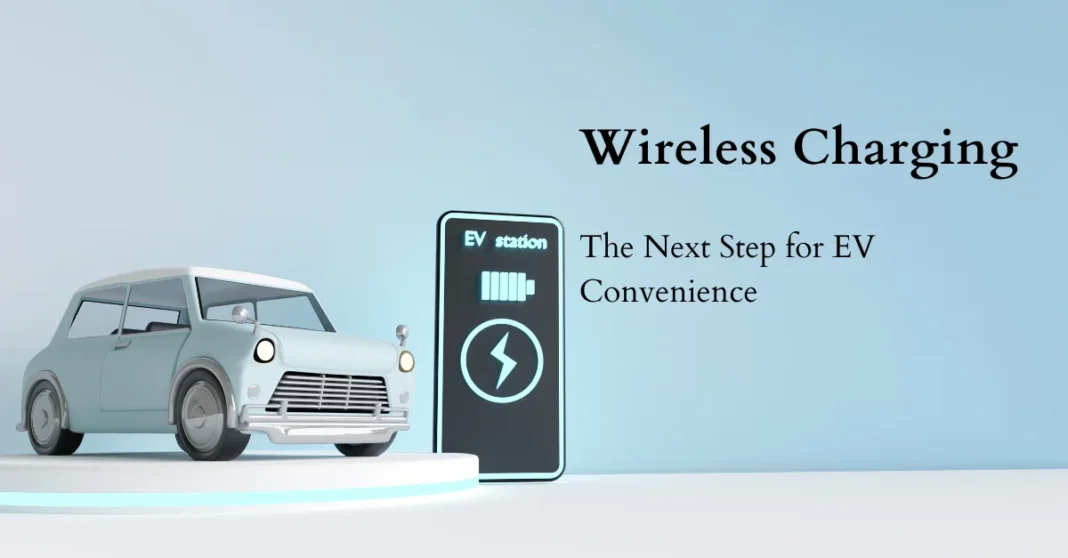As electric vehicles (EVs) continue to grow in popularity, the need for more convenient and efficient charging solutions becomes increasingly evident. One of the most exciting innovations on the horizon is wireless charging—a technology that promises to make charging EVs as easy as parking your car. Here’s why wireless charging could be the next game-changer in the EV industry:
What is Wireless EV Charging?
Wireless charging, also known as inductive charging, uses an electromagnetic field to transfer energy between two coils—one installed in the ground (or surface) and the other in the vehicle. When the car parks over the charging pad, energy is transmitted from the pad to the car’s battery, without the need for physical connectors or cables.
How Does Wireless Charging Work?
Wireless charging systems rely on electromagnetic induction. Here’s a simplified breakdown:
- Power Source: The charging pad, embedded in the ground or on a parking surface, is connected to an electrical source.
- Energy Transfer: When an EV with a compatible receiver coil is positioned over the charging pad, an electromagnetic field is created between the two coils.
- Charging: This electromagnetic field is converted back into electricity by the receiver coil in the car and used to charge the EV’s battery.
Key Benefits of Wireless EV Charging
- Convenience and Ease of Use
Wireless charging eliminates the need for drivers to manually plug in their cars. The process becomes as simple as parking in the right spot. This is especially useful for people with mobility challenges or those living in apartments where traditional charging can be a hassle. - Enhanced User Experience
Charging is no longer a task you have to think about. Imagine pulling into a parking spot at a shopping mall or your home garage, and without any effort, your car starts charging automatically. - Safety and Durability
Wireless charging reduces wear and tear on physical connectors. There are fewer exposed parts to be damaged by weather, dirt, or corrosion, leading to a longer-lasting and more reliable system. - Potential for Dynamic Charging
One of the most revolutionary aspects of wireless charging is dynamic charging—the ability to charge your vehicle while it’s in motion. This could lead to the development of electrified roadways that charge EVs as they drive, reducing the need for large battery capacities and extending range. - No More Cables
Say goodbye to tangled cables or the frustration of finding a charging station with a working cable. Wireless charging ensures that your car is always ready to go without the physical connection to a charging point. - Integration with Smart Cities
Wireless charging could become an integral part of smart city infrastructure. Charging pads could be embedded in roads, parking lots, and even streetlights, creating a seamless, frictionless experience for EV owners.
Challenges to Overcome
While the potential is vast, there are a few challenges to be addressed before wireless charging becomes mainstream:
- Efficiency: Wireless charging systems are currently less efficient than wired chargers, with some energy loss in the transfer process. Advances in technology will need to improve efficiency and reduce energy waste.
- Cost: The infrastructure for wireless charging—such as embedding charging pads in roads or parking areas—can be expensive to implement. This could make the widespread adoption of wireless charging more costly in the short term.
- Standardization: There is still a need for industry-wide standards to ensure interoperability between different EV models and wireless charging systems.
- Installation and Maintenance: Installing wireless charging systems in both public and private spaces requires careful planning and ongoing maintenance to ensure their proper function.
The Road Ahead: What’s Next for Wireless EV Charging?
Several companies, including WiTricity and Qualcomm, are already working on making wireless charging a reality for the automotive industry. The technology is expected to evolve in the coming years with improvements in power transfer, range, and cost efficiency. Additionally, governments and municipalities may start investing in this infrastructure to support the widespread adoption of EVs and enhance the overall convenience for drivers.
Conclusion: A Seamless Future for EV Charging
Wireless charging has the potential to revolutionize the way we charge our electric vehicles, making the process simpler, faster, and more integrated into our daily routines. As this technology matures and becomes more widely adopted, we can expect a future where charging is no longer a burden, but a seamless part of owning and driving an EV. Whether it’s through home charging systems, public charging pads, or dynamic charging roads, the convenience of wireless charging will likely be a major driver of EV adoption in the coming years.
#WirelessCharging #EVConvenience #ElectricVehicles #EVCharging #FutureOfEVs #EVTechnology #SmartCharging #GreenEnergy

